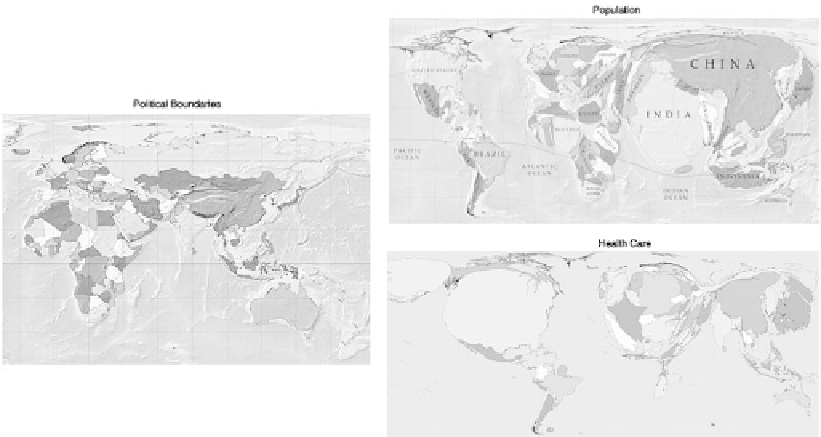Geography Reference
In-Depth Information
may or may not be the places where people live and apply pesticides. The
relationship of residential location and wetlands needs to be considered in
collecting the frogs. The basic principle applies to any type of geostatistical
data collection: all sampling and collection of data needs to take account of
the underlying processes and factors that influence the processes. The com-
plexity of relating sampling and data collection to things and events makes
geostatistics very complex, yet, when properly and reliably done, very reli-
able.
The Ecological Fallacy
A significant mistake easily made when working with geostatics is based on
what is known as the “ecological fallacy.” The
ecological fallacy
is the assump-
tion that the statistical relationship observed at one level of aggregation
holds at a more detailed level. A well-known example of this occurs when
people look at statistics of election results. In most U.S. states in the 2004
election, the majority of voters voted for George W. Bush, but most people
in the cities voted for John Kerry—if you only counted the votes from a city
and assumed it applies for the state, you would be in error. Take another
example: There may be a strong relationship between the number of zebra
mussels in lakes and the number of recreational boaters in a state, but other
local and regional factors in a state may be more significant in explaining the
relationship. The strong statistical significance at the state level may be hid-
Cartograms show how other geographical characteristics influence mapped attributes, issues that
geostatistics can take into account.
From
www-personal.umich.edu/~mejn/cartograms/



Search WWH ::

Custom Search